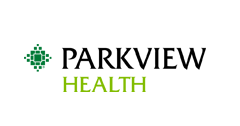Abstract
Objective: Our primary objectives were to examine adherence rates across two technologies (e-prescribing software and smart pill bottle) with cross-validation from alert-triggered messaging within the patient electronic health record (EHR) portal and to explore the benefits and challenges faced by atrial fibrillation (AF) patients in using a smart pill bottle.
Materials and Methods: We triangulated the rate of oral anticoagulant medication adherence among 160 AF patients over 6 months using an EHR in combination with data from the AdhereTechVC Wireless Smart Pill Bottle and SurescriptsVC . In addition, we collected qualitative feedback on patients’ Smart Pill Bottle usage through structured interviews with 153 participants.
Results: Patients maintained an average adherence rate of 90.0% according to the smart pill bottle; however, when dose misses were calibrated based on patient or provider feedback, the adjusted adherence was 93.6%. Surescripts adherence rates for refills were 92.2%. Participants generally found the bottle easy to operate but suggested that its size and functionality did not fit seamlessly into their existing routine, as many used weekly pill organizers to manage multiple medications.
Discussion: Though each method of tracking adherence has positive and negative attributes, combining them and seeking patient feedback may help capture a more accurate adherence rate than any single technological intervention. Technologies may have different design considerations for research and consumer use.
Conclusion: Overall, these technologies provide useful but imperfect adherence data for research purposes, and smart pill bottles could be improved with patient-centered design.
Lay Summary: Medication adherence is very important for those with chronic health issues. For those with heart disease, medication adherence not only offers opportunities for improving quality of life, but it also can be life-saving. Nonetheless, many patients with heart disease, including those with atrial fibrillation (the target group for this study) do not take their medications regularly. As technologies advance, there is unprecedented opportunity to track patients’ medication adherence through various methods, which might provide motivation and information to patients as they make daily choices about medication use. In this study, we cross-referenced the results of two of these measures over 6 months—a smart pill bottle, which we used to track pill bottle openings, and e-prescribing software, which we used to track medication refills. We also supplemented these measures with nurse-patient communication via the EHR messaging portal to record exceptions (eg, travel and medication changes) and interviewed patients about their medication use during the 6-month trial. Overall, the tracking technologies worked relatively well to track patient (n ¼ 160) medication behavior; however, they did not capture exceptions. Hence, triangulating data from different sources, with a patient feedback loop, appears critical for gathering accurate data on medication adherence.
Document Type
Article
Publication Date
3-23-2020
Publication Title
JAMIA Open
First Page
233
Last Page
242
Recommended Citation
Toscos, Tammy PhD; Drouin, Michelle; Pater, Jessica; Flanagan, Mindy; Wagner, Shauna; Coupe, Amanda; Ahmed, Ryan; and Mirro, Michael MD, "Medication Adherence for Atrial Fibrillation Patients: Triangulating Measures from a Smart Pill Bottle, e-prescribing Software, and Patient Communication through the Electronic Health Record" (2020). Health Services and Informatics Research. 5.
https://researchrepository.parkviewhealth.org/informatics/5

